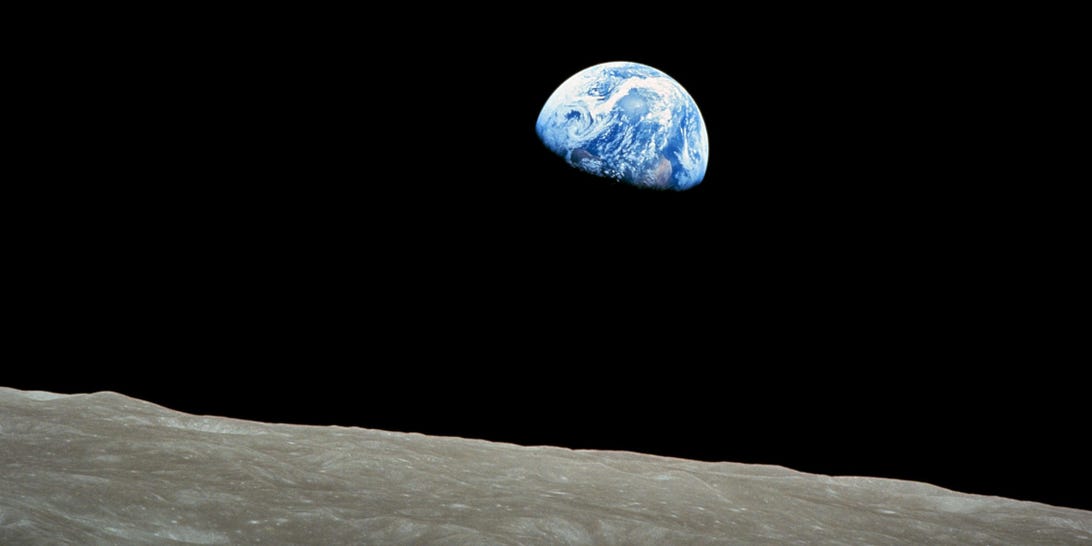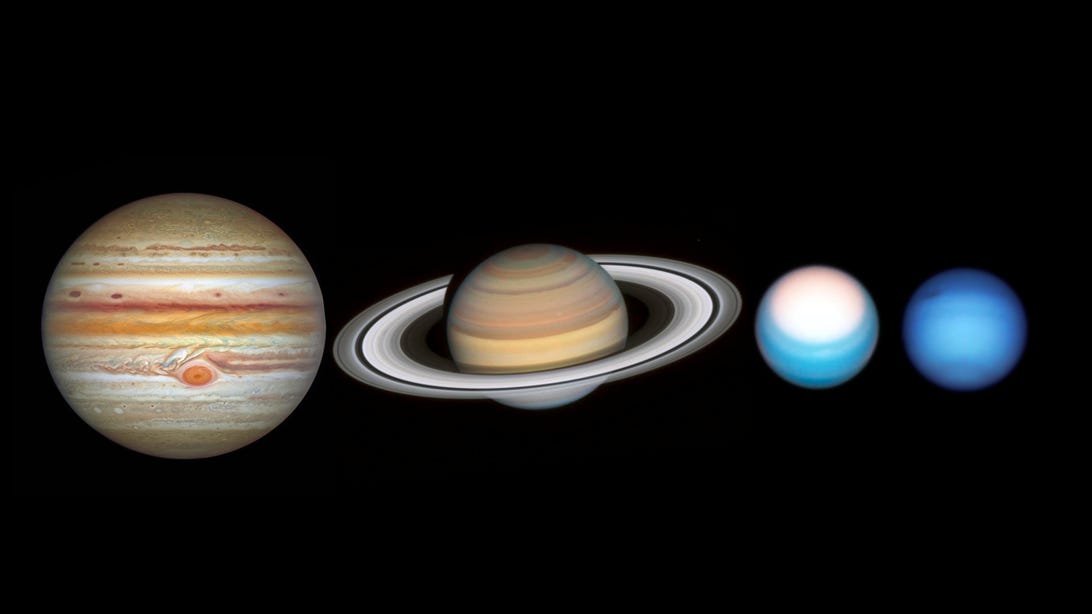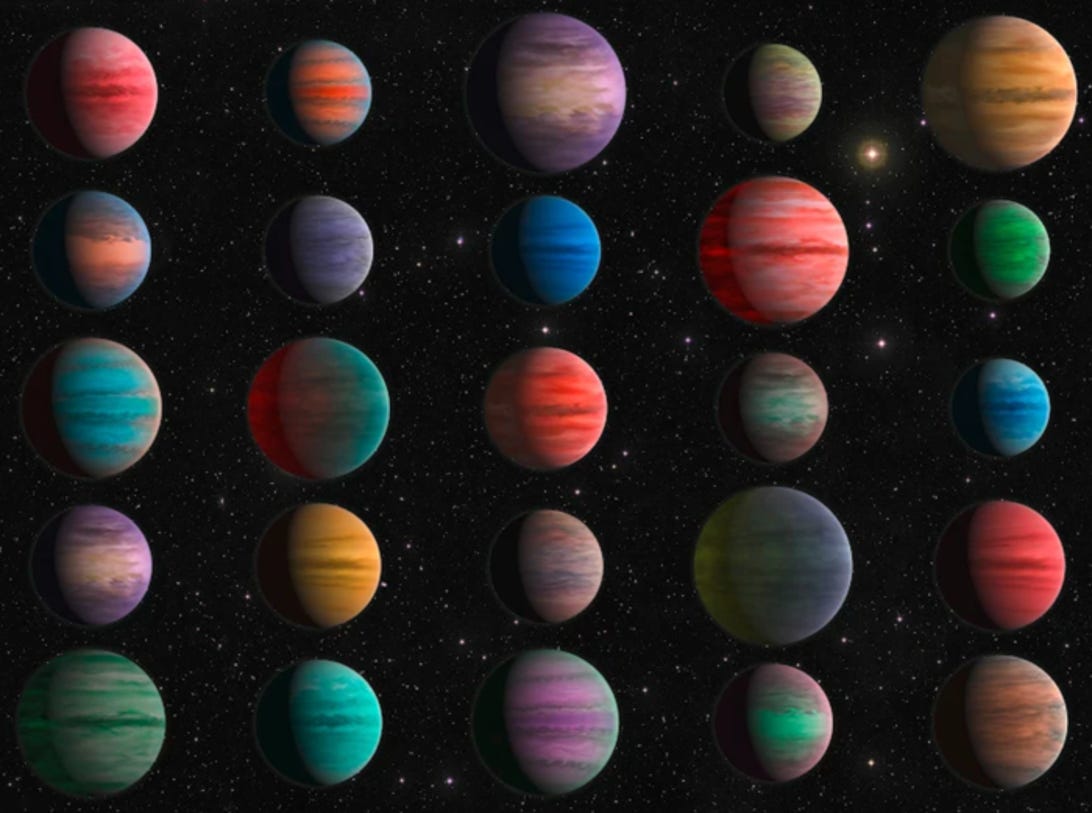[ad_1]
Christmas Eve, 1968 — Apollo 8 astronaut Invoice Anders took an image that may quickly reframe humanity’s view of the universe. It was once a picture of Earth, however from the moon’s vantage level.
Whilst you have a look at this image, a crisp planet stares again at you, levitating simply above the lunar horizon like a turquoise first light. And this very resemblance earned Anders’ {photograph} the very best identify: “Earthrise.”

Earthrise, taken right through the primary crewed voyage across the moon, Apollo 8.
Invoice Anders/NASA
For the reason that time Anders took his shot from a moon-orbiting spacecraft, scientists have procured completely mind-blowing photos of Saturn’s rocky rings, Neptune’s azure hues or even Jupiter’s orange marbled stripes — however those pictures slightly scratch the outside of our universe’s planetary society.
There are 1000’s extra alien worlds floating past our sun gadget, however they continue to be hidden to the human eye as a result of they are light-years on light-years clear of us. Our telescopes are too a long way away to seize their good looks. They display up most effective as blurry dots of sunshine — in the event that they display up in any respect.
Quickly, then again, those fuzzy exoplanets may come into focal point. On Tuesday in The Astrophysical Magazine, a staff of Stanford researchers defined a futuristic telescope idea that would theoretically take pictures of international orbs with sufficient readability to rival even Anders’ iconic Earthrise.
It is known as the “gravity telescope.”

The planets don’t seem to be to scale on this symbol. It presentations Hubble’s 2021 portraits of the outer planets, with Jupiter, Saturn, Uranus and Neptune operating from left to proper.
NASA, ESA, A. Simon (Goddard House Flight Middle), and M.H. Wong (College of California, Berkeley) and the OPAL staff
“With this era, we are hoping to take an image of a planet 100 light-years away that has the similar have an effect on as Apollo 8’s image of Earth,” learn about co-author Bruce Macintosh, stated in a commentary. Macintosh is a physics professor at Stanford College and deputy director of the Kavli Institute for Particle Astrophysics and Cosmology.
The telescope would paintings, the researchers say, through harnessing a mind-bending phenomenon known as gravitational lensing.
Gravitational lensing? What is that?
In a nutshell, gravitational lensing refers to the truth that gentle emanating from stars or different spacey items will get warped and distorted whilst passing through a supermassive, gravitationally dense cosmic frame.
The rationale this occurs is as a result of basic relativity, a well-established principle of gravity first proposed through Albert Einstein within the early 1900s. We may not delve too deeply into basic relativity as a result of, nicely, that will require fairly just a little of brain-burning physics, which I will save for over again.
For gravitational lensing, you simply want to know that basic relativity suggests area and time are interconnected like an enormous piece of moldable cloth. This cloth can bend and twist like your clothes, and principally does so when there may be an object in it.
Galaxy clusters warp it like none different, black holes warp it so much, Earth warps it fairly, the moon warps it a little bit, or even you warp it a teeny tiny bit. The whole thing warps it, however the larger the article, the extra warping you get.

On this photograph, gravitational lensing is distorting the sunshine coming from galaxies. That is why they appear form of like smudges or streaks.
NASA/ESA/Okay. Sharon/E. Ofek
And importantly for gravitational lensing, when gentle passes via this sort of warps, a form of magnifying glass impact is created. Most often, astronomers use this impact round probably the most warped spaces — in most cases galaxy clusters — to roughly “amplify” a long way away items. Gravitational lensing offers them a a lot better image of no matter it’s they are having a look at.
The gravity telescope idea works with the similar thought, however with a couple of tweaks.
Gravity telescope specifications
The primary distinction is that the researchers recommend the use of our very personal solar because the gravity telescope’s warp-source, as an alternative of the standard galaxy cluster. And 2nd, the gravity telescope calls for an additional step that is roughly like Sherlock Holmes-style deduction.
Consistent with the paper, the software would first seize the sun-warped exoplanet’s gentle (same old gravitational lensing stuff) however then, the telescope’s so-called sun gravitational lens will use that gentle information to paintings backward and reconstruct what the exoplanet in reality gave the impression of within the first position.
Ta-da.
To reveal how this might paintings, the researchers used current Earth photographs taken through the satellite tv for pc Dscovr. This spacecraft sits between our planet and the solar, so it is lovely best for a theoretical gravity telescope take a look at.
The staff ran photographs of our planet via a pc type to look what Earth would appear to be during the solar’s gravitational lensing results. Then, they evolved and used an set of rules to “unbend” the sunshine, or unwarp the sunshine, and start the reconstruction procedure.
Briefly, it labored.
An instance of a reconstruction of Earth, the use of the hoop of sunshine across the solar, projected through the sun gravitational lens. The set of rules that permits this reconstruction may also be carried out to exoplanets for awesome imaging.
Alexander Madurowicz
“Through unbending the sunshine bent through the solar, a picture may also be created a long way past that of an abnormal telescope,” Alexander Madurowicz, a doctoral pupil on the Kavli Institute for Particle Astrophysics and Cosmology and co-author of the learn about, stated in a commentary. “This may permit investigation of the detailed dynamics of the planet atmospheres, in addition to the distributions of clouds and floor options, which we don’t have any strategy to examine now.”
He added, “the medical attainable is an untapped thriller as a result of it is opening this new staring at capacity that does not but exist.”
With out the use of the staff’s gravitational lens, we would want a telescope that is one thing like 20 occasions wider than Earth to take a great transparent image of an exoplanet – however with the gravitational lens, the staff says, a Hubble-size telescope will do.
There is a large caveat
For any of this to paintings, the gravity telescope must be a minimum of 14 occasions farther clear of the solar than Pluto. Yeah.
And that, the authors of the learn about write, “will require excessive persistence with typical and current rocket era,” with trip occasions of about 100 years “or developments in propulsion to reach better departure pace, comparable to a sun sail.”
In different phrases, it would take round a century to get the gravity telescope to the place we would want it to be. Sun sails, like this one, may just probably scale back the trip time to one thing like 20 or 40 years, however sun sails are lovely a long way clear of common use.
However, the researchers say they are pushed through the grander penalties of taking impressive exoplanet photos in the future. As an example, it will a great deal get advantages the hunt to search out evidence of extraterrestrial lifestyles.

Artist’s conceptual symbol of 25 exoplanets lurking past our sun gadget. With the gravity telescope, possibly we will be able to seize precise pictures of them.
ESA/Hubble, N. Bartmann
“This is without doubt one of the remaining steps in finding whether or not there may be lifestyles on different planets,” Macintosh stated. “Through taking an image of some other planet, it’s essential have a look at it and perhaps see inexperienced swatches which are forests and blue blotches which are oceans – with that, it will be onerous to argue that it does not have lifestyles.”
And, as for my fellow newbie planetary admirers, I believe viewing {a photograph} of an exoplanet would regulate our existential viewpoint — the way in which Earthrise did for humanity as soon as upon a time.
Even now, having a look at Earthrise for sure spurs in us a unusual feeling; a way of disbelief that we are touring during the cosmos on what is principally a big, spherical send.
What’s going to we really feel after we catch a glimpse of all of the different gigantic, spherical ships within the universe?
[ad_2]
